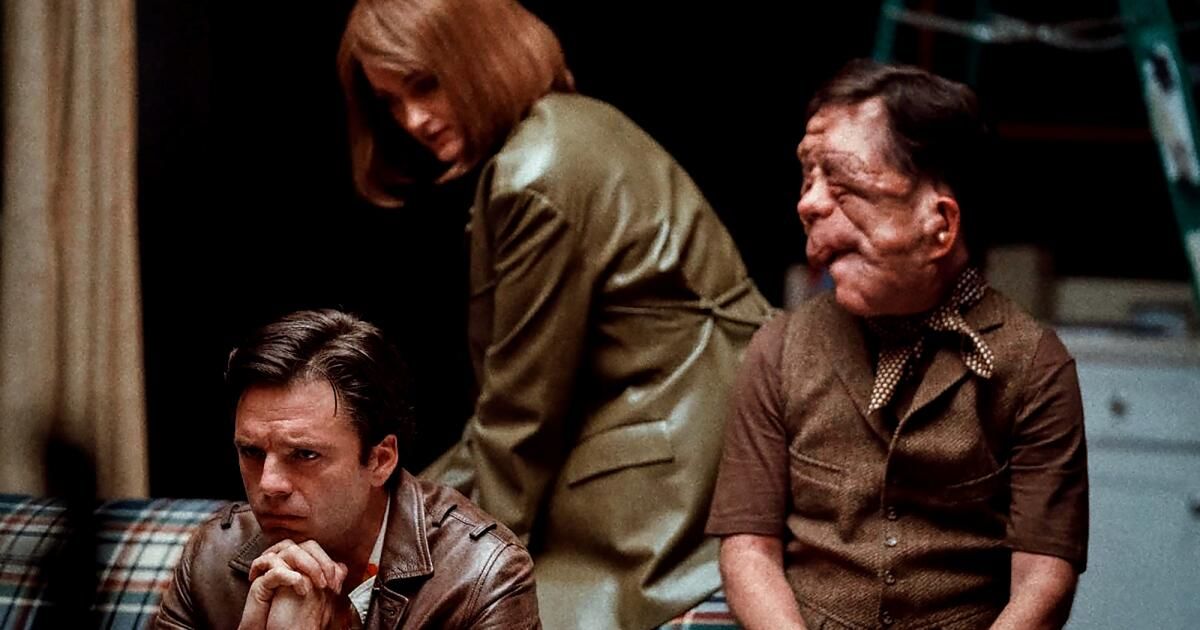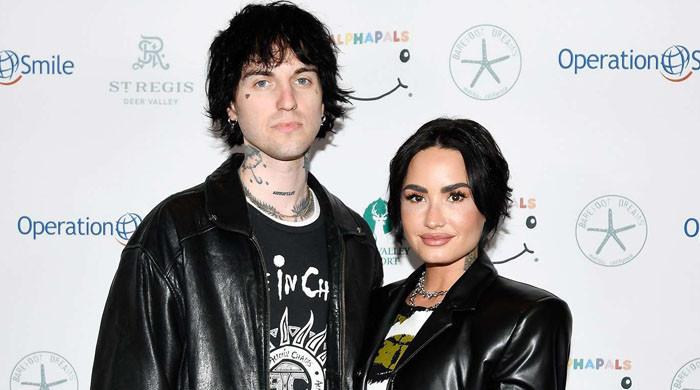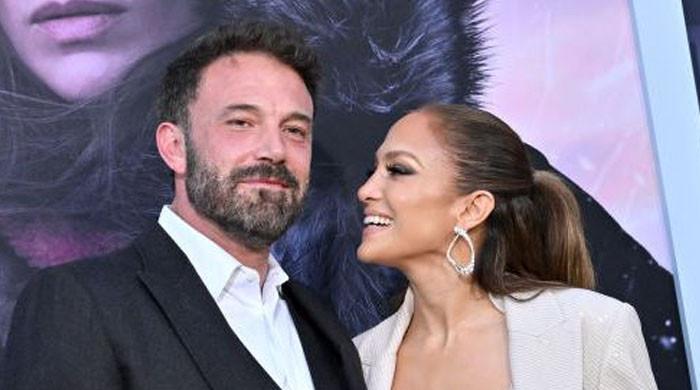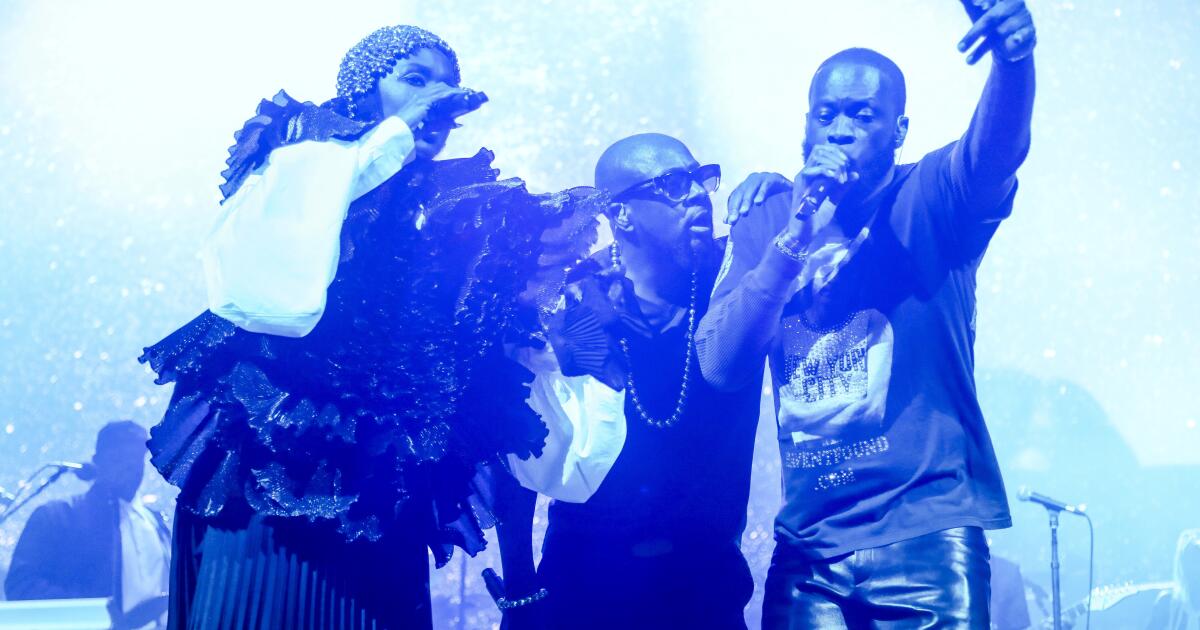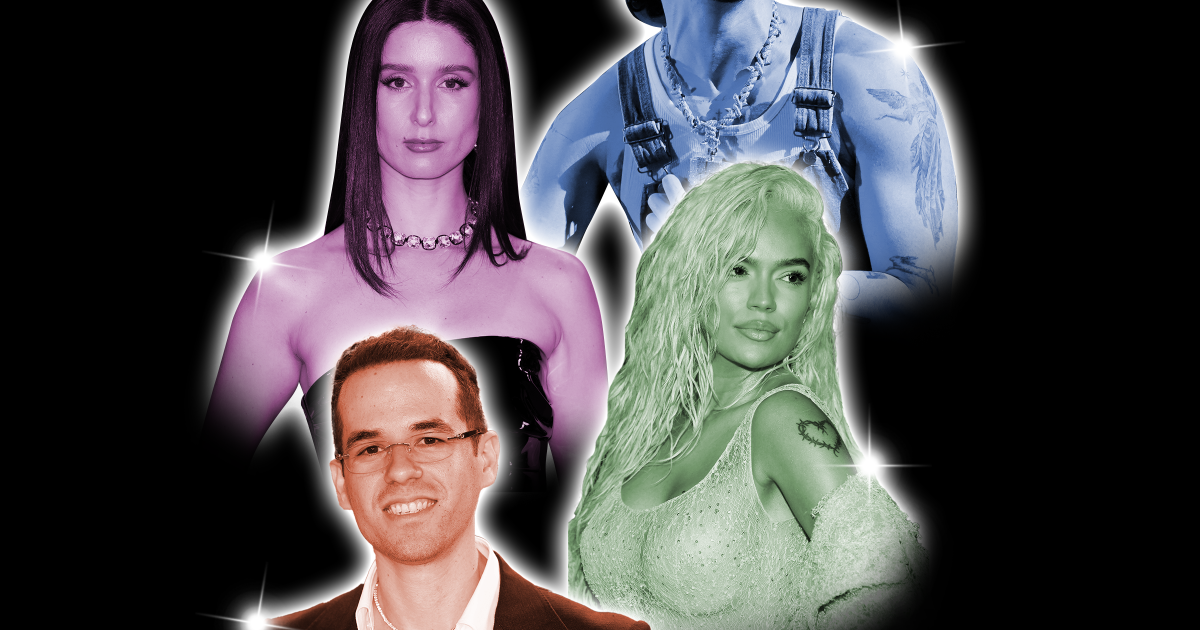Writer-director Aaron Schimberg peels back the bandages on the experimental transformation of a fragile, anxious New Yorker’s face in the strange, funny and superbly acted “A Different Man,” starring Sebastian Stan. A nightmarish fantasy that recalls Rod Serling at his most brazen, it also draws on cinematic cues from a variety of decades that specialized in destabilizing entertainment: the horror noir of the 1930s and ’40s, the neurotic comedy of the ’70s and the no-frills independent films of the ’80s about urban life.
In its offbeat sensibilities, “A Different Man” fits with Schimberg’s abiding curiosity about the fragility of identity. If you’ve seen his quick-witted, quick-fire 2019 film “Chained for Life,” about the vanities that plague the making of a low-budget mad-scientist movie starring a cast of disabled actors, you know how attuned Schimberg can be to everyday slights and microaggressions. And as a student of all kinds of film, Schimberg makes sure to add one more layer: the way culture plays an outsized role in how we perceive others and interact with the world.
When we meet Edward (Stan), a reserved man with severe facial deformities, his outlook on existence is rather resigned: the world sees him as an oddity and he behaves like someone relegated to the background. Although he works as an actor (he has a part in a training video in which he teaches employees how to behave towards co-workers “with different faces” (it’s as funny and embarrassing as it sounds)), it’s not even clear that Edward sees himself as an artist. His job might as well be that of a lonely guy in a dark apartment, with a stained, leaky, rapidly expanding hole in the ceiling for an irritating colleague.
Suddenly, however, he receives the encouraging, even flirtatious attention of his attractive and perceptive new neighbor Ingrid (Renate Reinsve, the breakout star of The Worst Person in the World), a self-confessed playwright who has yet to write anything. What Edward has been privately seeking is a groundbreaking medical procedure that would reconfigure his face and change the script of his life. In Schimberg’s world, everyone is so culturally conscious that even Edward’s doctor says, “Someday you could be part of a documentary.”
One painful night, Edward discovers just how well the treatment is working when his face begins to peel off in sticky, bloody clumps, revealing in the mirror someone who looks like, well, Sebastian Stan. Just as quickly, Edward jumps at the chance for a check-up, calling himself “Guy” the next day to his building's doorman, who doesn't recognize him, and gleefully informs him that Edward has died.
Adam Pearson, left, and Sebastian Stan in the film “A Different Man.”
(Matt Infante / A24)
Schimberg wastes no time with this twist, jumping to a point where Guy is now a top real estate agent with a fancy apartment, an office fling, and his “handsome man” appeal plastered all over the company’s swanky ads. But one day, he notices his old neighbor Ingrid on the street, and he can’t help himself. He follows her to a small theater and discovers she’s auditioning actors for her first play, about a poignant, sad, disfigured man named Edward. The self he left behind is now, as the woman who got away imagines it, the role of a lifetime. But also, a dangerous portal.
Channeling John Frankenheimer’s 1966 psychodrama “Seconds” in the manner of “Beauty and the Beast,” Schimberg has delightfully strange and self-destructive plans for his refashioned protagonist: a vicious cycle of personality disintegration as the past catches up with him. Edward was authentic, something he abandoned to become the generic “type,” capable of being appreciated only when wearing the mask of his former self.
Let the artistic process and a third collaborator — Guy’s stand-in, Oswald (the wonderful Adam Pearson of “Under the Skin,” who suffers from neurofibromatosis) — deepen these broken-mirror problems. Ingrid’s tireless pursuit of ethical truth (not to mention rave reviews and a packed house) leads her ever closer to the wisdom and friendly charm of Oswald, who shares Edward’s facial features but whose charming confidence and rich, rewarding life couldn’t be further from the taciturn man of the film’s first half. Or, for that matter, from the jealous, cowardly Guy who surfaces, whom Stan hilariously attacks with every angry sneer.

Adam Pearson in the film “A Different Man.”
(Matt Infante / A24)
The Kafkaesque reversal-of-fortune humor that follows (centering on how the mere presence of the outgoing, beloved Oswald adds insult to injury to Guy/Edward’s identity crisis) is as shrewdly conceived a comic nightmare as we’ve had since the height of the “Zelig” era of Woody Allen or Charlie Kaufman (whose film “Synecdoche, New York” seems a cousin to). Adding to the film’s retro vibe are Wyatt Garfield’s grainy 16mm photography and Umberto Smerilli’s astonishing score, which go a long way toward establishing a relentless, get-lost-in metropolis that at times reminded me of Roman Polanski’s “The Tenant.”
But there is also something beautiful to be taken from this “careful what you wish for” scenario, and that is the future of actor Pearson, whom Schimberg first memorably cast in “Chained for Life,” and whose enduring charisma breathes life into the script’s concerns. Pearson has been given a great role here, to be sure, and in the wake of “A Different Man,” which may be the last word in disability satires, one hopes he becomes well-known enough to forge a career based on nothing less than his proven ability. Which would be a welcome change, indeed.
'A different man'
Classification: R, for sexual content, graphic nudity, language and some violent content.
Duration: 1 hour, 52 minutes
Playing: In limited release on Friday, September 20

